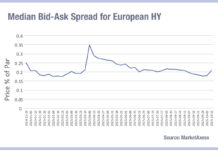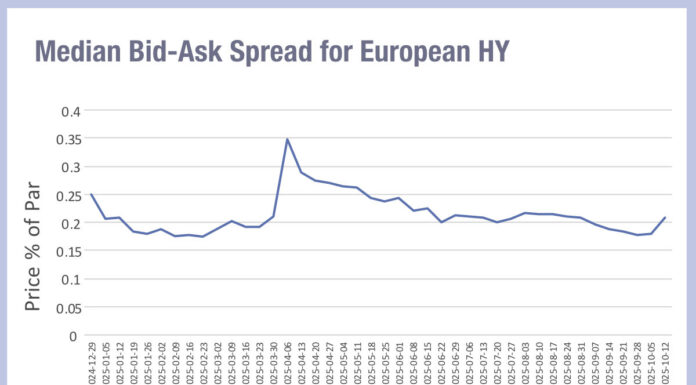 Transaction cost analysis (TCA) – or execution quality analytics (EQA) – is a much sought after, but often objectively challenged, service in corporate bond markets.
Transaction cost analysis (TCA) – or execution quality analytics (EQA) – is a much sought after, but often objectively challenged, service in corporate bond markets.
There are many variables which can impact trading performance in credit, and these have historically been hard to capture due to the variable quality and availability of data. However, traders are reporting that the improving level of data support by market operators and third parties, alongside improving analytics, are creating a more level playing field for benchmarking trade execution.
Nevertheless, when reporting and communicating execution quality reports, it is still crucial that the goals for trading are fully represented. This can be most obvious where reports comparing voice and electronic trading are set side-by-side.
A starting point in this analysis is to note that the voice and e-trading are often, but not exclusively, used for different purposes.
Electronic execution is used more commonly for smaller and less complex trades, and these are often characterised by the need for price improvement, and speed of execution. That would typically entail reaching out to multiple dealers in competition.
This is changing – increasingly complex and large orders are negotiated electronically, such as portfolio trades – however lower touch execution remains the lion’s share of electronic trading.
Voice trading is more frequently used to trade larger orders which require a greater degree of negotiation. That often means that they are not traded in competition. That means the execution goals that buy-side desks aim for are quite different to the targets for a lot of electronic trading.
Trading desks are typically expected to know upfront what the expected cost for a trade should be dependent on how it is executed, which means that TCA models can more applied more effectively than ever before.
Understanding that the goal for a trade may be to get an order executed regardless of price – for example in a fast and heavily directional market – or with minimum market impact, is crucial to the decision tree for executing trades.
From a TCA point of view, not only can the market price be reviewed very effectively thanks to the proliferation of trading analytics, assessing how that trade looks on a T+1 or T+5 basis can give traders a hint towards assessing market impact. Comparing it to similar trades, either in a given name or similar names around the same time and in similar size, also helps to build a story around that execution.
What this means practically is that a TCA model needs to be able to cater for a range of trading goals, and outcomes, and to assess a trade across multiple metrics in order to effectively judge its quality, whether voice or electronically traded.
This may not always result is a clear, quantifiable ‘score’ but it can give a real path to improving performance in a systematic way over time.
©Markets Media Europe 2025















